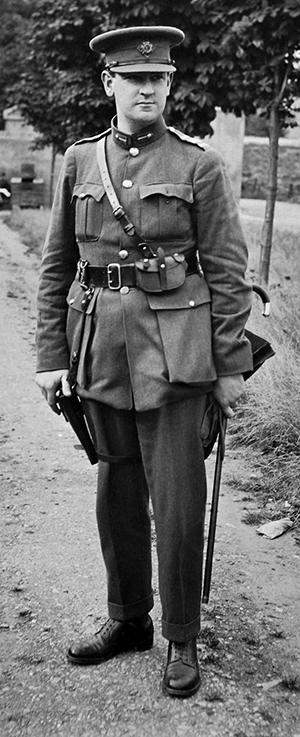BITE-SIZED HISTORY
Published in Issue 1 (January/February 2022), Volume 30BY TONY CANAVAN
NATIONAL MUSEUM OF IRELAND WAKES UP
Representatives from the National Museum of Ireland (NMI) appeared before TDs and Senators at the Oireachtas Tourism and Culture Committee last year and admitted that they were influenced by the Black Lives Matter movement in their desire to be a ‘more inclusive museum’. Now the NMI wants to focus ‘on inclusivity and our local and domestic communities—not just international tourists’. In her opening statement, NMI chair Catherine Heaney said that ‘political engagement in our dialogue on an inclusive museum’ will need to set targets that ‘go far beyond visitor numbers’. Her statement also said that ‘The Black Lives Matter movement, which became an active voice in the pandemic, has highlighted that museums across the globe have a distance to travel’. Ms Heaney recognised that cultural institutions would play an important role in ‘the rebuilding of our society’ after the pandemic but that this must ‘reflect the multiple identities of our communities’. Ireland is not alone in this, as the Black Lives Matter movement has led to some museums around the world re-evaluating artefacts on display. The British Museum, for example, removed a bust of its founding father, the Irish-born physician Hans Sloane, owing to his links with slavery in the seventeenth century.
COLLINS’S WALKING-STICK AMONG HISTORIC ITEMS AT AUCTION

Above: Michael Collins with his silver-tipped rosewood walking-stick, which was recently sold at auction for £52,000.
A rosewood walking-stick owned by Michael Collins recently sold for £52,000 at an auction in Belfast. It was among several historical pieces sold at Bloomfield Auctions, which also included surveillance files from the Royal Irish Constabulary about Collins during the War of Independence and a service medal from the 1916 Rising in its original box. The stick, which is made of rosewood with a silver tip, was described in the auction catalogue as ‘unremarkable’ and was only expected to sell for around £10,000, so the £52,000 that it sold for was well above the estimate. It had been in the hands of a private collector for over 40 years and was accompanied by a letter of provenance showing its link to Collins. It was bought by well-known publican Louis Fitzgerald, who intends to display it in his pub, An Poitín Stil. By coincidence, a blackthorn walking-stick belonging to James Craig, Northern Ireland’s first prime minister, came up for sale a few weeks later. This stick had also been in the hands of an English collector for many years. It was presented to Craig on a visit to Lurgan in 1925. Unlike the stick used by Michael Collins, this one only fetched £10,000.
FRANCE TO RETURN BENIN TREASURES
France is preparing to return to Benin 26 artefacts that are currently on display in the Musée du quai Branly-Jacques Chirac in Paris. The order comes from President Emmanuel Macron himself. The wooden anthropomorphic statues, royal thrones and sacred altars, known as the ‘Abomey Treasures’, were looted in November 1892 by French soldiers under the command of Colonel Alfred Dodds. The French troops broke into the Abomey Palace of King Behanzin of Dahomey, in present-day Benin, and looted many royal objects, 26 of which Dodds donated to the Musée d’Ethnographie du Trocadero in Paris. In 2003 the objects were relocated to the Musée du quai Branly-Jacques Chirac. The government of Benin is creating a museum in Abomey to accommodate the treasures, which might be partly funded by France. This is the most recent instance of a European museum being caught up in a controversy over stolen artefacts. A few have been returned to their country of origin, but some museums have refused to consider these requests. To allay fears that this might be the first in a series of such repatriations, the French culture minister, Roselyne Bachelot, has emphasised that this initiative is not going to create a precedent.
TREASURES FOUND BY PUBLIC ON DISPLAY IN THE ULSTER MUSEUM
The Ulster Museum recently put on display 24 objects that were discovered by members of the public. The items include two pieces of gold jewellery dating from the Bronze Age found in Downpatrick, Co. Down, and Enniskillen, Co. Fermanagh; a Roman hoard found at Murlough, Co. Down; and a Viking silver arm-ring found near Ballinderry, Co. Antrim. The Bronze Age objects consist of a 3cm delicately decorated ‘bulla’ likely to have been worn around the neck as a locket, and a torc which would probably have been worn around the neck or wrist. The torc is the only example of its type in Ireland that has been coiled like a spring. The Murlough hoard is significant because Roman material is very rare in Ireland, given that Ireland was never part of the Roman Empire. Two of the items are gold finger-rings, while the third is part of a silver military buckle. All date from the late fourth or early fifth century AD. How they came to be in Ireland is a mystery.
















